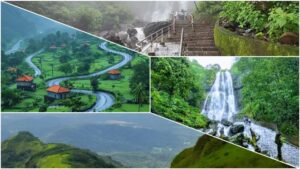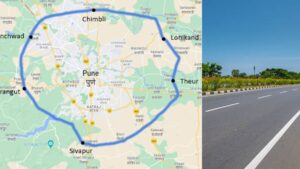Seven Wonders of Khandala: A Treasure Trove in the Western Ghats
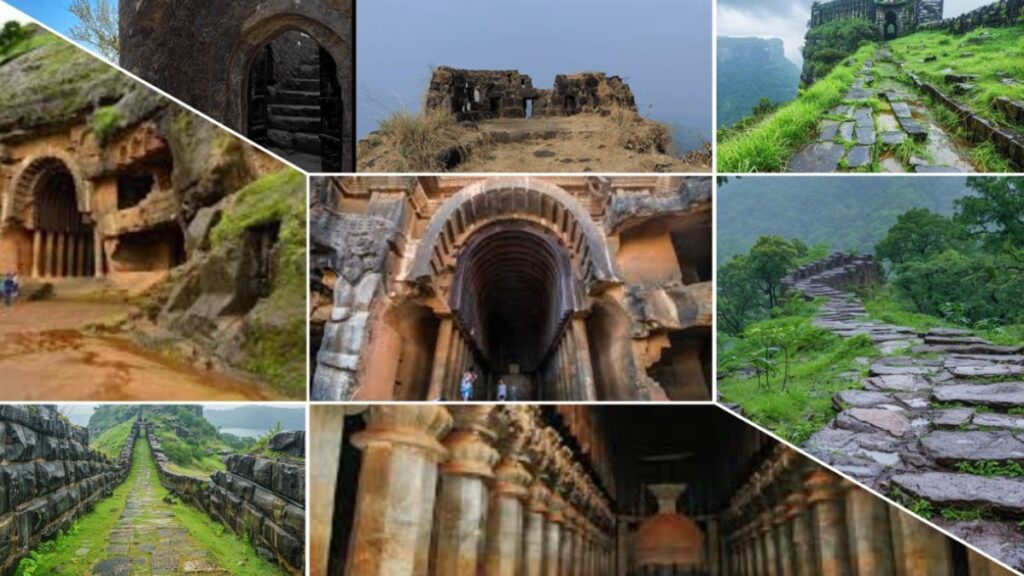
Khandala is located in the verdant Western Ghats of Maharashtra. It offers beautiful landscape, pleasant weather, and remnants of its rich history. These locations include old forts and finely carved rock-cut caves that provide insight into the architectural history and cultural development of ancient India.
1. Lohagad Fort – The Iron Sentinel
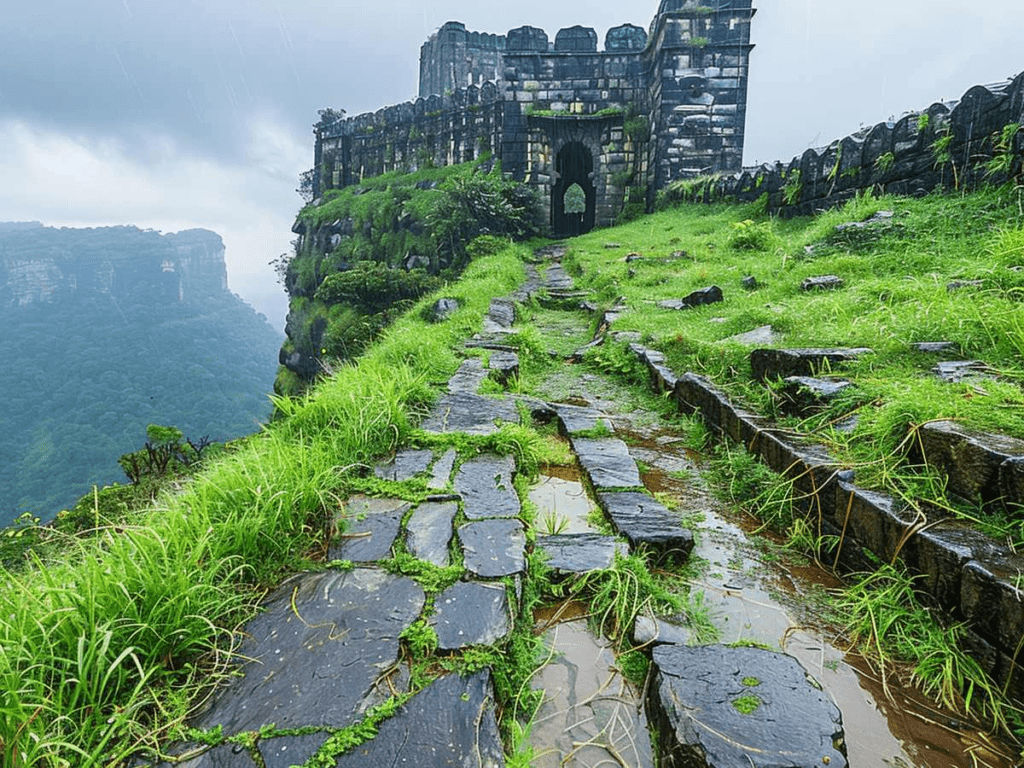
Lohagad Fort, perched on a hill close to Malavali, is a stark reminder of the Maratha Empire’s military prowess. Because of its strong construction and amazing vista spots overlooking the Sahyadri hills, this stronghold is also known as the “Iron Fort”. Travelers can take in expansive views that extend far beyond as they pass through the massive doors, intricate water systems, and the remnants of ancient homes.
2. Bhaja Caves

Situated in Lonavala and only a short drive from Khandala, the Bhaja Caves are an ancient rock-cut complex that dates back to 200 BC. In addition to its religious significance, these Buddhist caves are renowned for their exquisite artwork. The intricately carved caves on hillsides contain detailed stupa designs, and the chaityas (prayer halls) are composed of monastic cells or viharas with walls decorated with scenes from mythology that portray the life of Buddha. Other scenes feature various motifs, like mythical beasts, all beautifully rendered in sculpture. For those looking for spiritual comfort or history aficionados, this serene setting rich in historical significance is ideal.
3. Visapur Fort – A Journey Through Time and Nature
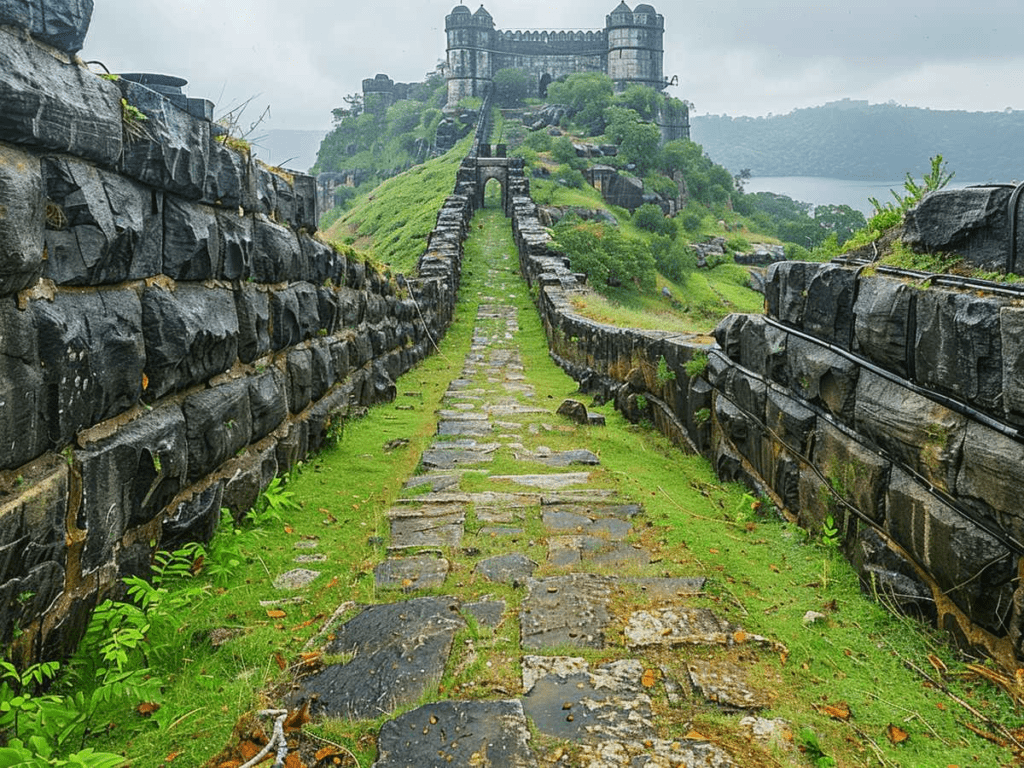
Constructed concurrently with Lohagad, Visapur Fort transports its visitors through space and time. One of the local empires founded it to protect the trade routes flowing through their territories. This enormous structure includes water reservoirs, underground passageways, and an enormous cannon known as the “Laxmi Toph.” For those with an interest in both history and the natural world, Visapur Fort is a popular choice because of the breathtaking views it offers of Pawana Lake and the Western Ghats, which make the hike from Khandala worthwhile.
4. Karla Caves – The Grandeur of Ancient Buddhist Architecture

Moving on from Khandala towards Lonavala, we come upon the Karla Caves, which are historic Buddhist rock-cut caves that date back to 200 AD. These caverns are well-known for its intricate chaitya hall, which is among the largest in India and has exquisitely carved deity figures all over it, elegant pillars, and an archway between these two pillars at the entrance gate of this magnificent building. Nestled among verdant slopes, Karla Caves entice tourists with its serene environs that provide an understanding of the artistic and religious customs prevalent in bygone times.
5. Rajmachi Fort – The Jewel of Sahyadri Hills
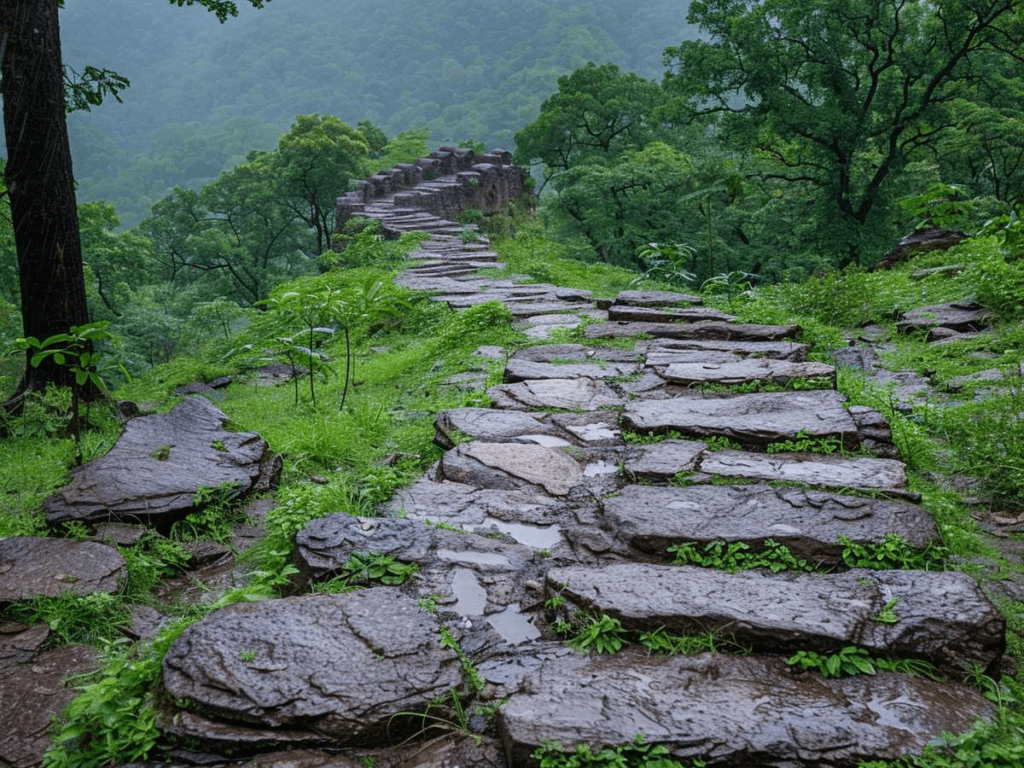
Situated near Lonavala, Rajmachi Fort is an historical jewel constructed in the 17th century A.D. It is located on top of Sahyadri hills that have been a strategic point in different dynasties’ rule such as Marathas or Mughals for instance. A trek from Khandala to Rajmachi is an adventure itself, passing through dense forests full of babbling brooks besides old stone pathways once used a long time back . From this fort, you can enjoy a breathtaking view of valleys around it while being steeped in stories about heroism or conquests, therefore it should be seen by anyone who likes both history and natural beauty alike.
6. The Bedsa Caves – A Quiet Retreat of Ancient Artistry

The Caves of Bedsa are located in hidden places surrounded by hills near Kamshet, and they are not very well known but historically important Buddhist rock-cut caves which date back to the 1st century BCE. The sculptures and inscriptions found within these caves are of breath-taking beauty thus giving a glimpse into ancient India’s cultural exchanges and artistic traditions. Hence, if you want to find some peace amidst history and nature, the quiet surroundings of the Bedsa Caves would make an ideal spot.
7. Tung Fort: A Trekker’s Delight

Located close to Pawana Lake, Tung Fort is a historical hill fort that provides panoramic views of the Sahyadri range with its green valleys underneath them. Tung Fort dates back to 12th century and has witnessed the rise and fall of several dynasties Marathas as well as Mughals included among them. It is always rewarding to hike from Khandala to Tung Fort through dense forests and old stone paths with historical remnants all over their way. This fort’s strategic location combined with its scenic beauty makes it a popular destination among trekkers and history enthusiasts.
Conclusion
In summary, a trip to the ancient remains of Khandala is a trip down memory lane that also highlights the enduring influence of India’s cultural legacy on contemporary circumstances. Every location, from massive forks to finely etched caves, relates a story of the daring, artistic brilliance, or intense spiritual devotion of those who are no longer with us. Come here for some peace and quiet because of our ancient Khandala’s ruins for an exposure involving as much in history as culture or nature, regardless of whether you’re a dedicated historian, a lover of nature, or just sick of the noise of the city.

